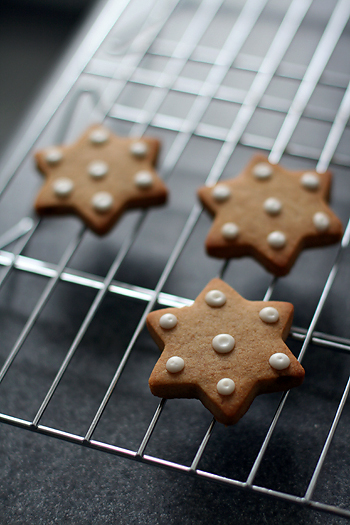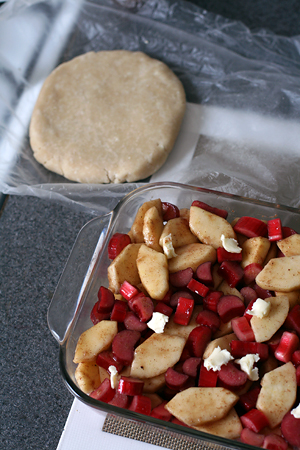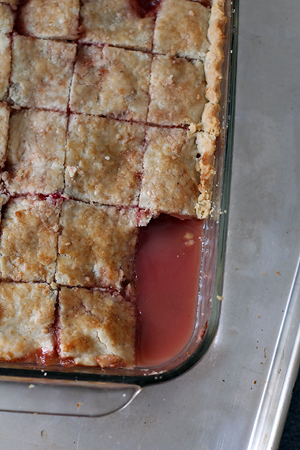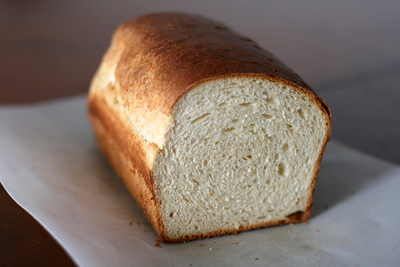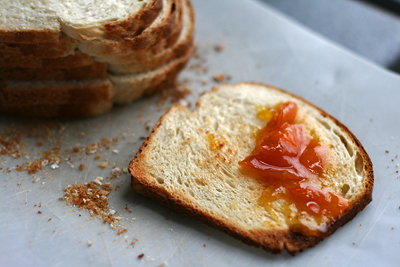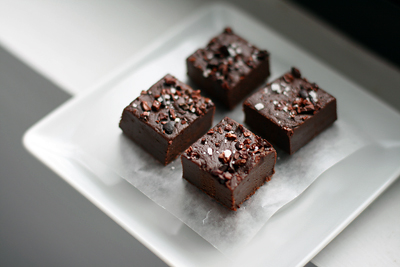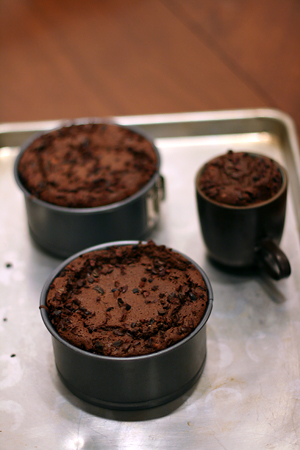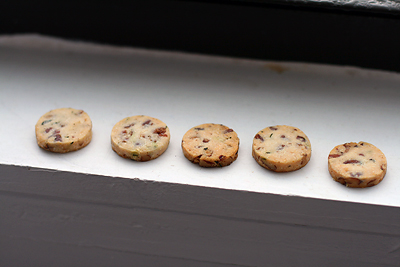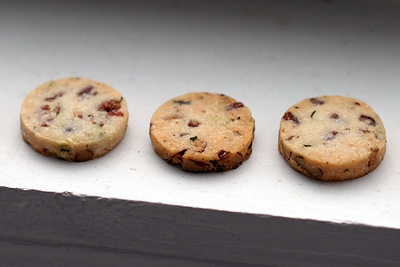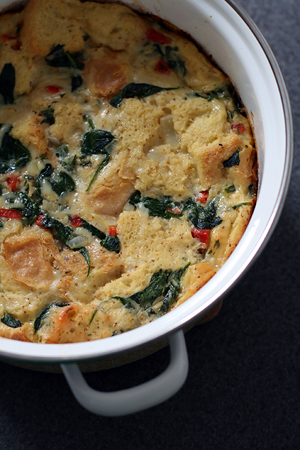
I had people over for brunch on Sunday. My favorite brunch dishes are crowd-pleasers that practically cook themselves: baked oatmeal, yeasted waffles, baked french toast, breakfast strata, or roasted vegetables. Basically anything that can be thrown in a casserole and baked.
Make-ahead dishes let me spend more time socializing than cooking. Plus, everyone gets to eat at the same time, and no one's left waiting for something to finish frying in a skillet.
This time I decided to try a savory bread pudding. Bread puddings aren't an exact science. I usually tweak the recipes I try until I get the product I want. Here are a few of my notes:
Instead of using breakfast sausage, I substituted roasted and diced red peppers that had been dried on paper towels. Other vegetables can be substituted as well, but i'd avoid anything with a lot of liquid. I like thick bread puddings, so I used a large pot rather than a 9x13 pan.
For the bread, I used the "Country White" loaf from Allegro Hearth. It worked well, though a bread with slightly more structure might have been better. I love this bread- i'm pretty sure it's what they use for white toast at Coca Cafe, and it's one of my favorites. I started with a generous 6 cups of bread cubes, then poked more into the assembled dish until it looked like enough to eventually soak up all the liquid.
This is one of the best breakfast recipes i've made in a while. The herbs, mustard, and cheese complement each other well, and the flavors are fresh and bright. It's a rich, comforting dish with crusty golden edges that beg to be scraped out of the pan. I'm hoping to make it again soon, maybe with some asparagus or butternut squash.
Savory Breakfast Bread Pudding
adapted from Sara Foster's
Fresh Every Day2 tbsp unsalted butter, plus more for buttering the baking dish
1 large yellow onion, diced
1/2 pound breakfast or Italian sausage, removed from the casing (or substitute another vegetable)
4 cups spinach leaves, washed and drained (about 6oz or 1 large bunch)
2 1/2 cups whole milk
8 large eggs, lightly beaten
2 tbsp Dijon mustard
1/2 tsp sea salt
1/2 tsp freshly ground black pepper
6 cups 1 1/2 inch cubes day-old country Italian or French bread
1 1/2 cups shredded Swiss cheese (about 6 oz)
1 cup grated parmesan cheese (about 3 oz)
2 tbsp chopped fresh thyme leaves
1 tbsp chopped fresh rosemary
1. Butter a 9x13 inch glass baking dish. Melt the 2 tbsp butter in a large skillet over medium heat. Add the onion and cook for 3-5 minutes, until soft. Add the sausage and cook 4 minutes, breaking it up into pieces, until it's cooked through (if you want to substitute another raw vegetable, you can add it shortly after the onions, or mix in a cooked vegetable towards the end). Stir in the spinach and cook just until wilted, about 2 minutes. Remove skillet from the heat and drain off the liquid.
2. Whisk the milk, eggs, mustard, salt, and pepper together in a large bowl. Add the bread and stir to coat. Stir in the sausage, cheeses, thyme, and rosemary and pour into the prepared baking dish. Cover and refrigerate for at least 1 hour or overnight.
3. Preheat the oven to 350F.
4. Twenty minutes before baking, remove the pudding from the refrigerator and bring to room temperature. Bake the bread pudding for 45-50 minutes, until it is puffy and light golden brown. Remove the pudding from the oven and let rest for 5 minutes before serving. Serve warm.
